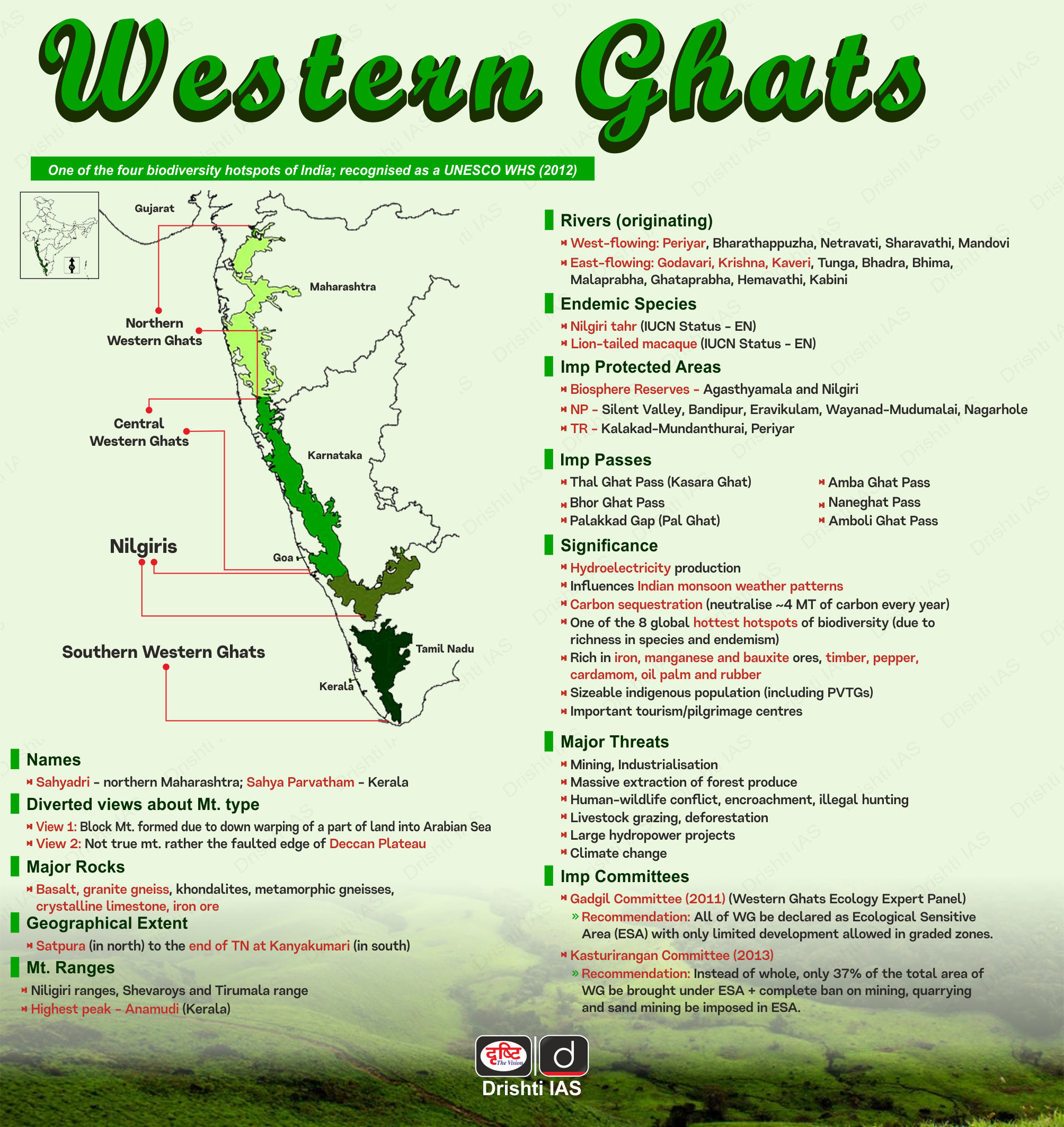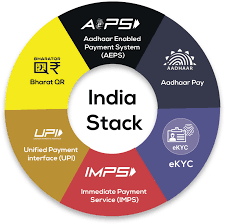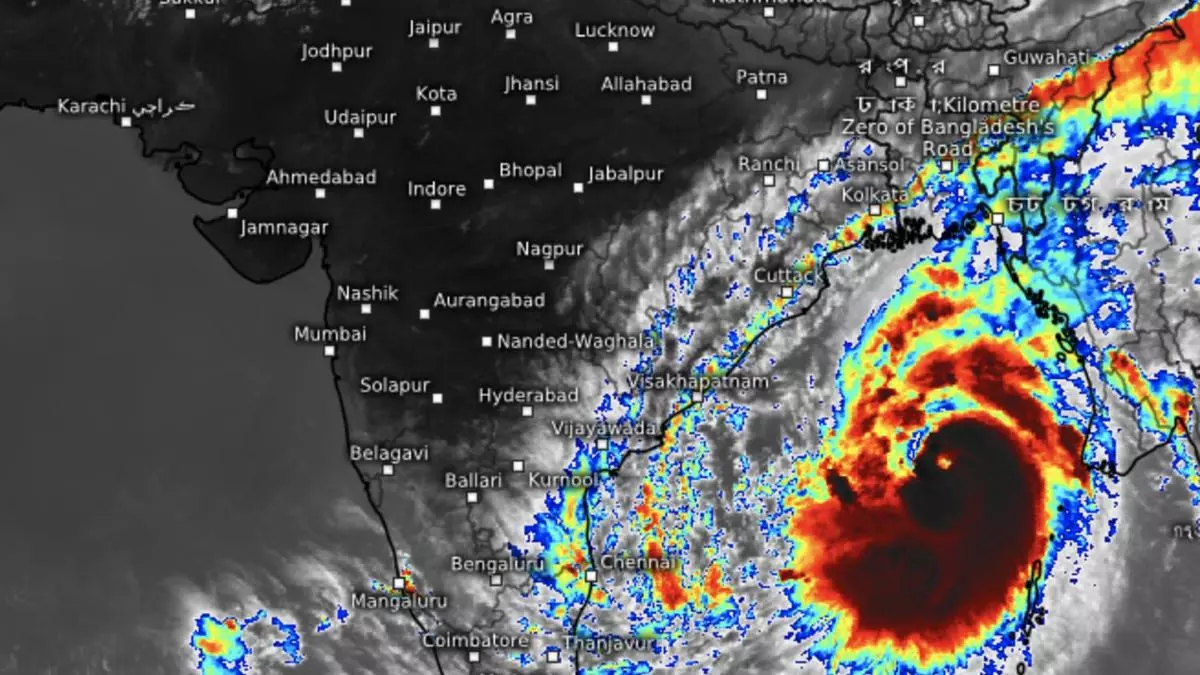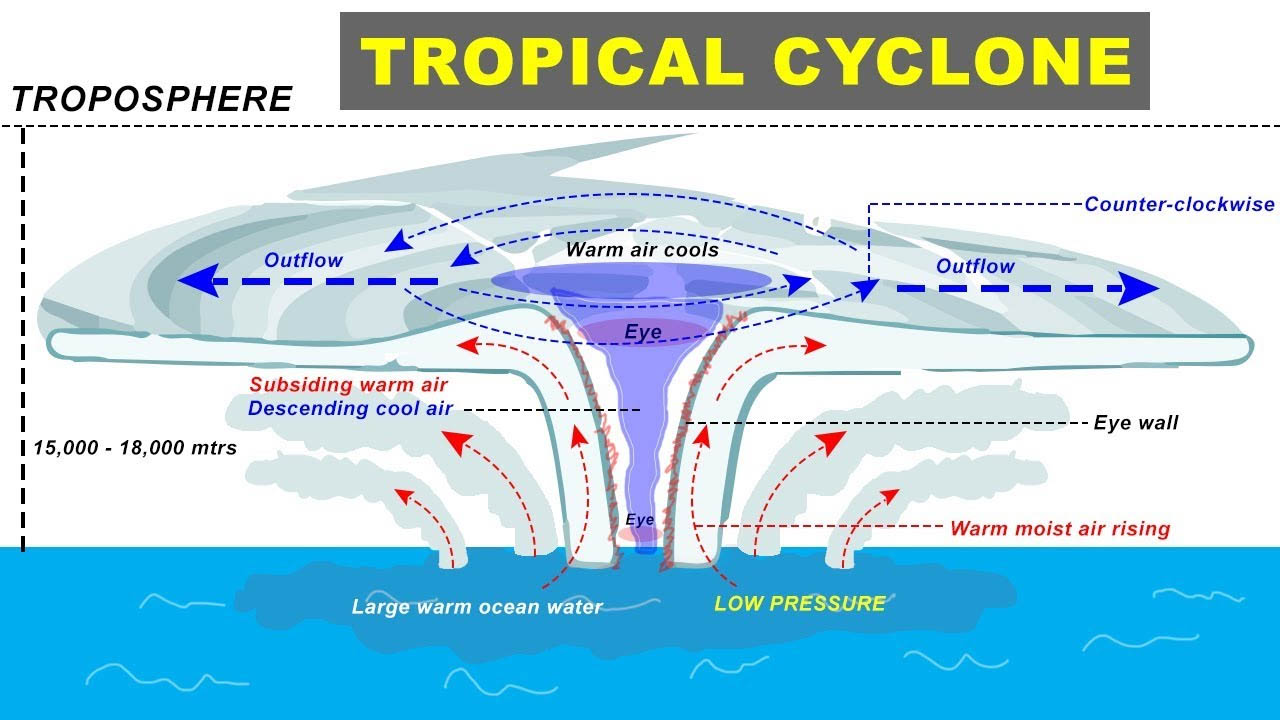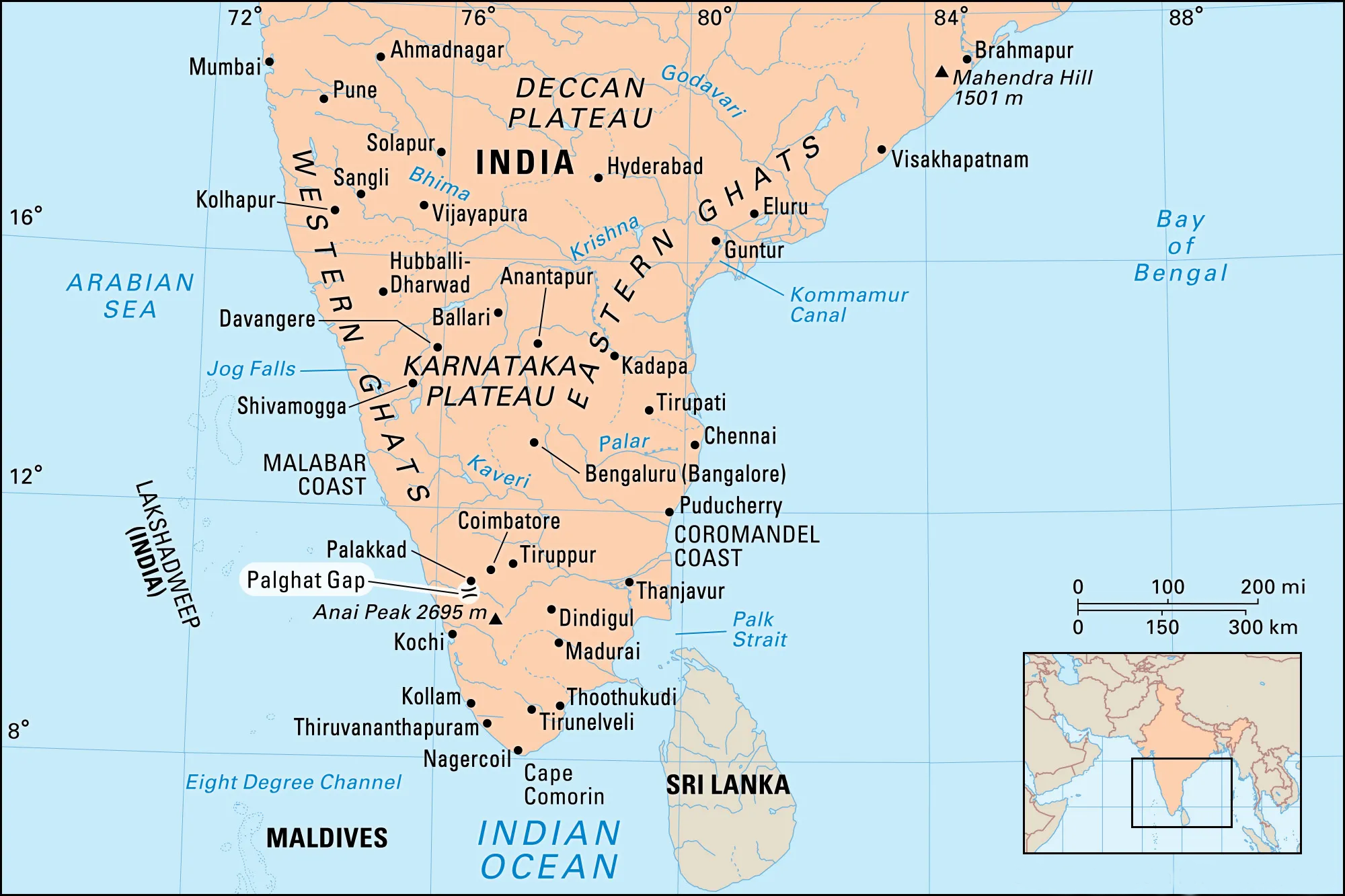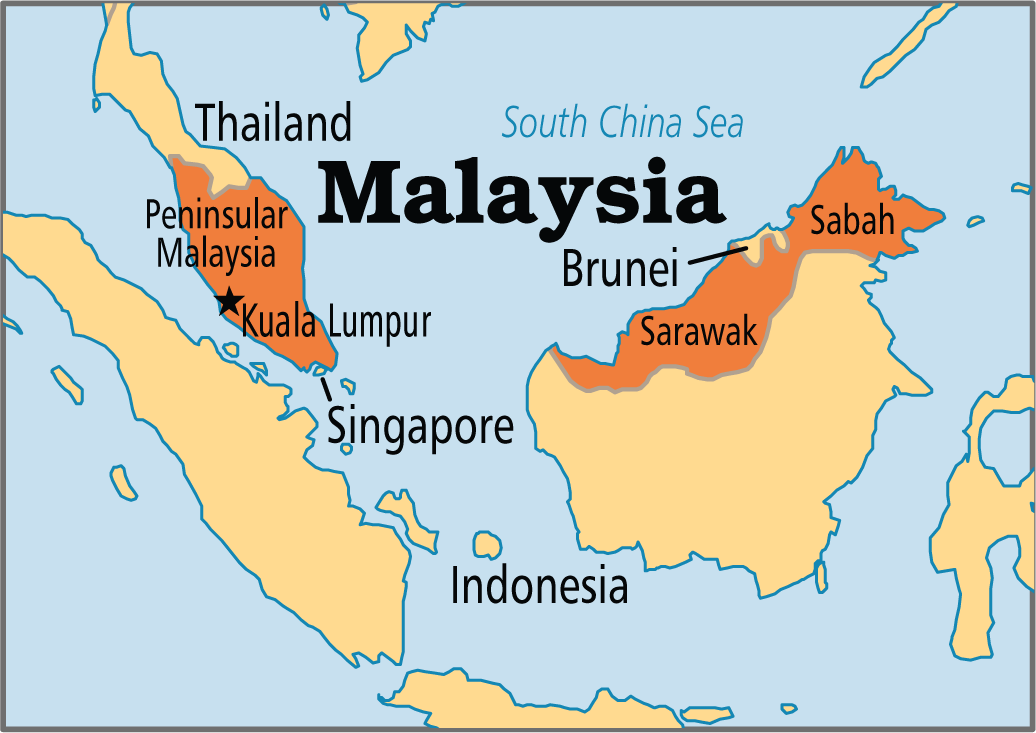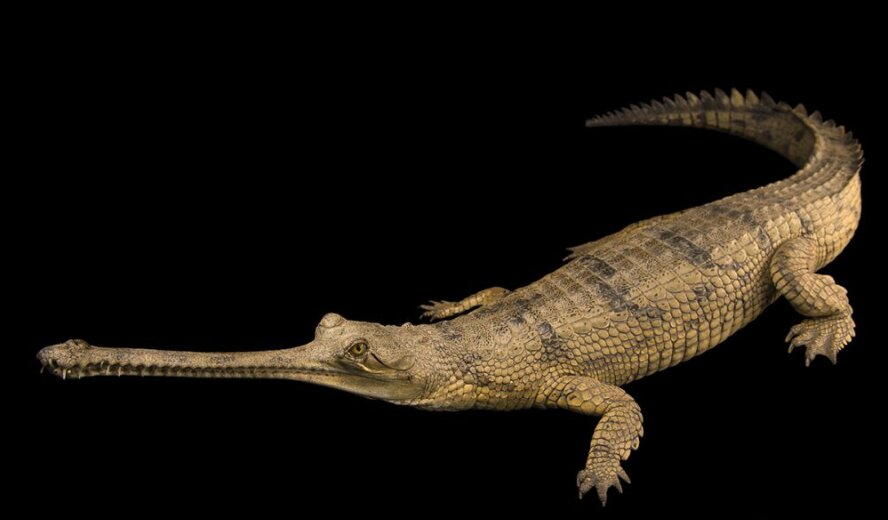Carbon Dating
For Prelims: Carbon Dating, ASI, Gyanvapi Mosque, Shivlinga, Carbon-14, The Places of Worship Act of 1991.
For Mains: Carbon Dating and other methods to determine the age of Inmate things.
Why in News?
Recently, the Allahabad High Court allowed the Archeological Survey of India (ASI) to conduct Carbon Dating of a 'Shivling' inside the Gyanvapi Mosque in Varanasi, Uttar Pradesh.
- The petitioners have claimed the object inside the Gyanvapi mosque to be a "Shivling". The claim was disputed by the Muslim side, which said the object was part of a "fountain".
- It set aside an order of the Varanasi District Court that rejected a plea for scientific investigation, including carbon dating, of the structure.
What is Carbon Dating?
- About:
- Carbon dating is a widely used method to establish the age of organic materials, things that were once living.
- Living things have carbon in them in various forms.
- The dating method is based on the fact that Carbon-14 (C-14) is radioactive, and decays at a well-known rate.
- C-14 is an isotope of carbon with an atomic mass of 14.
- The most abundant isotope of carbon in the atmosphere is C-12.
- A very small amount of C-14 is also present.
- The ratio of C-12 to C-14 in the atmosphere is almost static and is known.
- Half Life:
- Plants get their carbon through photosynthesis; animals get it mainly through food. Because plants and animals get their carbon from the atmosphere, they too acquire C-12 and C-14 in roughly the same proportion as is available in the atmosphere.
- When they die, their interactions with the atmosphere stop. While C-12 is stable, the radioactive C-14 reduces to one half of itself in about 5,730 years — known as its ‘half-life’.
- The changing ratio of C-12 to C-14 in the remains of a plant or animal after it dies can be measured and can be used to deduce the approximate time when the organism died.
- Age Determination of Inanimate Things:
- Carbon dating cannot be applied in all circumstances. It cannot be used to determine the age of non-living things like rocks, for example.
- Also, the age of things that are more than 40,000-50,000 years old cannot be arrived at through carbon dating.
- This is because after 8-10 cycles of half-lives, the amount of C-14 becomes almost very small and is almost undetectable.
- For determining the age of inanimate things, instead of carbon, decays of other radioactive elements that might be present in the material become the basis for the dating method.
- These are known as Radiometric Dating Methods. Many of these involve elements with half-lives of billions of years, which enable scientists to reliably estimate the age of very old objects.
What are the Radiometric Methods for Age Determination of Nonliving Things?
- Potassium-Argon and Uranium-Thorium-Lead: Two commonly employed methods for dating rocks are Potassium-Argon dating and Uranium-Thorium-Lead dating.
- The radioactive isotope of potassium decays into argon, and their ratios can give a clue about the age of rocks.
- Uranium and thorium have several radioactive isotopes, and all of them decay into the stable lead atom. The ratios of these elements present in the material can be measured and used to make estimates about age.
- Exposure to Sunlight: There are also methods to determine how long an object has remained exposed to sunlight. These apply different techniques but are again based on radioactive decay and are particularly useful in studying buried objects or changes in topology.
- The most common of these is called cosmogenic nuclide dating, or CRN, and is regularly applied to study the age of ice cores in polar regions.
- Indirect Carbon Dating: In some situations, carbon dating can be used indirectly as well.
- A way in which the age of ice cores in glaciers and polar regions is determined by studying carbon dioxide molecules trapped inside large ice sheets.
- The trapped molecules have no interaction with the outside atmosphere and are found in the same state as when they were trapped. Determining their age gives a rough estimate of the time when the ice sheets were formed.
- A way in which the age of ice cores in glaciers and polar regions is determined by studying carbon dioxide molecules trapped inside large ice sheets.
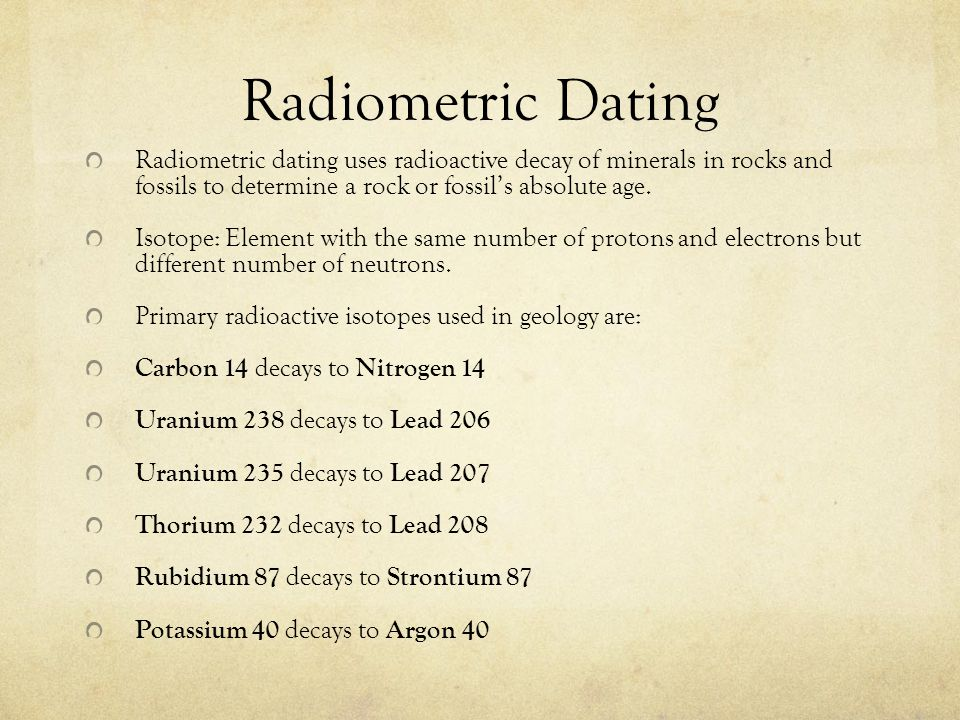
What are the Limitations of Determining Age of Gyanvapi Shivling?
- There are specific limitations in the case that prevent disruptive methods or uprooting of the structure, as directed by the SC.
- Therefore, traditional methods like carbon dating, which involve analyzing trapped organic material beneath the structure, may not be feasible in this particular situation.
What is the Gyanvapi Dispute?
- The Gyanvapi dispute revolves around the Gyanvapi Mosque complex in Varanasi. Hindu petitioners claim that the mosque was built on the site of an ancient Hindu temple. They argue that the presence of a "Shivling" serves as evidence of the temple's existence. The Petitioners have sought the right to worship Maa Shringar Gauri on the outer wall of the mosque complex.
- The management committee of the mosque, however, maintains that the land is Waqf property and argues that The Places of Worship Act of 1991 prohibits any changes to the character of the mosque.
- Historically, the Gyanvapi Mosque was built in 1669 during the reign of Mughal emperor Aurangzeb. It was constructed after the demolition of the existing Vishweshwar temple. The plinth of the temple was left intact and served as the courtyard of the mosque, while one wall was preserved as the qibla wall facing Mecca. The present Kashi Vishwanath Temple, dedicated to Lord Shiva, was later built adjacent to the mosque by Rani Ahilyabai Holkar in the 18th century.
- Various claims have been made over the years, with some asserting that the mosque remains the original sacred place of Hindu worship.
Water Footprint of AI
For Prelims: ChatGPT, Artificial Intelligence, GPT-4, AI models
For Mains: Balancing technological advancements with resource conservation, Impact of AI on water resources
Why in News?
As AI tools like OpenAI's ChatGPT continue to gain popularity for their versatility and automation capabilities, concerns are being raised regarding their environmental impact.
- A recent study has shed light on the water footprint of Artificial Intelligence(AI) models, highlighting the significant amounts of water required to maintain data centers and train these models.
What is the Water Footprint of AI?
- The water footprint of AI is the amount of water that is used to generate electricity and provide cooling for the data centers that run AI models.
- The water footprint of AI can be divided into two components: direct water consumption and indirect water consumption.
- Direct water consumption refers to the water that is evaporated or discharged as waste during the cooling process of data center servers.
- Indirect water consumption refers to the water that is used to produce the electricity that powers data center servers.
- The water footprint of AI can vary depending on several factors, such as the type and size of the AI model, the location and efficiency of the data center, and the source and mix of electricity generation.
How Much Water Does AI Consume?
- According to a recent study titled "Making AI Less 'Thirsty:' Uncovering and Addressing the Secret Water Footprint of AI Models", training a large AI model such as GPT-3 can directly consume up to 700,000 liters of clean freshwater, which is enough to produce 370 BMW cars or 320 Tesla electric vehicles.
- The same study also estimated that a conversation with an AI chatbot such as ChatGPT can consume up to 500 ml of water for 20-50 questions and answers, which may not seem like much until you consider that ChatGPT has more than 100 million active users who engage in multiple conversations.
- The GPT-4, expected to have a larger model size, is predicted to further amplify these water consumption statistics.
- However, estimating the water footprint of GPT-4 is challenging due to the lack of publicly available data for calculation.
- Although online activities using AI models occur digitally, the physical storage and processing of data take place in data centers.
- Data centers generate considerable heat, necessitating water-intensive cooling systems, often utilizing evaporative cooling towers.
- To maintain system integrity, the water used must be pure freshwater, and data centers also require significant water for power generation.
What are the Concerns with the Water Footprint of AI?
- Water Scarcity:
- Water scarcity is a global issue, and AI technologies contribute to the problem. AI infrastructure requires significant amounts of freshwater for cooling, which strains limited water resources.
- Environmental Impact:
- Extraction of freshwater for AI operations can harm aquatic biodiversity.
- Energy required for water treatment and transport for AI operations contributes to carbon emissions and climate change.
- Unsustainable Resource Management:
- Diverting water for AI operations can hinder access to water for human consumption, agriculture, and other critical needs.
- Equity and Social Implications:
- Water scarcity disproportionately affects vulnerable communities that rely on limited water supplies for their livelihoods.
- The water-intensive nature of AI can further exacerbate inequities by diverting water away from communities that need it the most.
- Long-term Sustainability:
- The expanding AI industry could place additional strain on water resources without addressing the water footprint issue.
- Addressing the water footprint is crucial for the long-term sustainability of both AI development and water availability.
How Can the Water Footprint of AI be Reduced?
- Use Renewable Energy Sources:
- By using renewable energy sources like wind or solar power to generate electricity, we can significantly reduce the amount of water needed.
- Implement Water-Efficient Cooling Systems:
- Most data centers, which house the servers and other hardware that power AI systems, use water-based cooling systems. Implementing water-efficient cooling technologies like air cooling or direct-to-chip liquid cooling can help reduce the amount of water used.
- Develop Water-Efficient Algorithms:
- AI algorithms can be designed to be more water-efficient by reducing the need for computational power or by optimizing algorithms to use less water-intensive processes.
- Increase Hardware Lifespan:
- Extending the lifespan of hardware can reduce the amount of water used in its production. By designing hardware that lasts longer and is upgradeable, we can reduce the need to replace hardware frequently.
- Promote Responsible Water Management:
- Encouraging responsible water management practices by data centres and other AI companies can help reduce the water footprint of AI.
- This includes measures like recycling wastewater, using rainwater harvesting systems, and implementing water-efficient landscaping practices.
- Adopting policies and regulations that incentivize or mandate the reduction of the water footprint of AI by setting standards, targets, or taxes.
- Encouraging responsible water management practices by data centres and other AI companies can help reduce the water footprint of AI.
UPSC Civil Services Examination, Previous Year Question (PYQ)
Prelims
Q1. With the present state of development, Artificial Intelligence can effectively do which of the following? (2020)
- Bring down electricity consumption in industrial units
- Create meaningful short stories and songs
- Disease diagnosis
- Text-to-Speech Conversion
- Wireless transmission of electrical energy
Select the correct answer using the code given below:
(a) 1, 2, 3 and 5 only
(b) 1, 3 and 4 only
(c) 2, 4 and 5 only
(d) 1, 2, 3, 4 and 5
Ans: (b)
4th Positive Indigenisation List
For Prelims: Defence Public Sector Undertakings (DPSUs), Positive Indigenisation List (PIL), Micro, Small, and Medium Enterprises (MSMEs), Mission DefSpace, iDEX scheme, Defense Industrial Corridors, NETRA
For Mains: Status of Indigenization of the Defence Sector in India.
Why in News?
In a significant move towards promoting self-reliance in the defence sector and reducing imports, India's Defence Public Sector Undertakings (DPSUs) have received approval for the fourth Positive Indigenisation List (PIL).
- The list comprises 928 strategically-important Line Replacement Units (LRUs), sub-systems, spares, and components, with an import substitution value of approximately Rs 715 crore.
What is a Positive Indigenisation List?
- About:
- The concept of the positive indigenization list entails that the Indian Armed Forces, comprising the Army, Navy, and Air Force, will exclusively source the listed items from domestic manufacturers.
- These manufacturers may include entities from the private sector or Defense Public Sector Undertakings (DPSUs).
- The fourth Positive Indigenisation List follows three previous PILs that were published in December 2021, March 2022, and August 2022, respectively.
- So far, 310 items have been successfully indigenised, with the breakdown as follows: 262 items from the first PIL, 11 items from the second PIL, and 37 items from the third PIL.
- This initiative is in line with India's vision of 'Atma Nirbharta' (self-reliance) and aims to boost the domestic defence industry, enhance investment, and reduce dependency on imports.
- The concept of the positive indigenization list entails that the Indian Armed Forces, comprising the Army, Navy, and Air Force, will exclusively source the listed items from domestic manufacturers.
- Indigenisation and In-house Development:
- To achieve indigenization, the DPSUs will utilize different routes under the 'Make' category, focusing on in-house development through the capabilities of Micro, Small, and Medium Enterprises (MSMEs) and the private Indian industry.
- This approach will provide a boost to the economy, encourage investment in the defense sector. Additionally, this initiative will foster the growth of design capabilities within the domestic defense industry by actively involving academia and research institutions.
- Procurement and Industry Participation:
- The DPSUs are set to initiate procurement action for the items listed in the fourth PIL. To facilitate the process, Srijan Portal Dashboard has been specifically designed for this purpose.
What is the Status of Indigenisation of the Defence Sector in India?
- Need for Indigenization:
- India's arms imports fell 11% between 2013-17 and 2018-22, the country is still the world’s top importer of military hardware in 2022 highlighted by a report by the Stockholm International Peace Research Institute (SIPRI).
- Current Estimates and Targets:
- Current estimates place India's defensive capital expenditure at USD 130 billion over the next five years.
- The defense ministry has set a USD 25 billion (Rs 1.75 lakh crore) turnover goal in defense manufacturing in the next five years, including an export target of USD 5 billion worth of military hardware.
- Government Initiatives:
- Priority Procurement: The Defense Acquisition Procedure (DAP)-2020 gives priority to the procurement of capital items from domestic sources under the Buy Indian (IDDM) category.
- Liberalised Foreign Direct Investment (FDI) Policy: The FDI policy allows for 74% FDI under the automatic route in the defense industry, and up to 100% through Government route wherever it is likely to result in access to modern technology.
- Mission DefSpace: The Mission DefSpace has been launched to promote defense-related innovations and developments in the space sector.
- Innovations for Defense Excellence (iDEX) Scheme: The iDEX scheme involves startups and MSMEs in defense innovation projects, fostering their participation and contribution.
- Defense Industrial Corridors: Two Defense Industrial Corridors have been established in Uttar Pradesh and Tamil Nadu, focusing on developing defense manufacturing ecosystems and attracting investments.
- Examples of Indigenous Defense Arsenal in India:
- Tejas Aircraft: The Tejas is a lightweight, multi-role supersonic aircraft designed and developed indigenously in India.
- Arjun Tank: Developed by the Defense Research and Development Organization (DRDO), the Arjun Tank is a 3rd generation main battle tank that showcases India's expertise in armored vehicle technology.
- NETRA: The NETRA is an airborne early warning and control system developed domestically, providing crucial surveillance and reconnaissance capabilities.
- ASTRA: India has successfully developed the ASTRA, an all-weather beyond-visual-range air-to-air missile, enhancing the country's air defense capabilities.
- LCH ‘Prachand’: It is the first indigenous Multi-Role Combat Helicopter which has potent ground attack and aerial combat capability.
- ICG ALH Squadrons: In a major boost to further strengthen the capabilities of the Indian Coast Guard, ALH Mk-III squadrons were commissioned in Porbandar and Chennai in June and December 2022.
- Challenges:
- Technological Gap: Developing cutting-edge defence technologies and acquiring advanced capabilities is a significant challenge for India.
- The country has traditionally relied on foreign suppliers for critical defence technologies, and bridging the technological gap requires substantial investments in research and development (R&D), as well as collaboration with industry and academia.
- Infrastructure and Manufacturing Base: Building a robust defence industrial base and infrastructure to support indigenous production is a major challenge.
- The defense manufacturing ecosystem in India needs to be modernized, with improvements in infrastructure, technology transfer, skilled workforce development, and streamlined procurement processes.
- Testing and Certification: Ensuring the quality, reliability, and safety of indigenously developed defense systems through rigorous testing and certification processes is crucial.
- Developing robust testing facilities and establishing effective quality control mechanisms are essential for gaining the confidence of users and export markets.
- Technological Gap: Developing cutting-edge defence technologies and acquiring advanced capabilities is a significant challenge for India.
Way Forward
- Create a Defense Innovation Ecosystem: There is a need to establish a dedicated defense innovation ecosystem that brings together defense organizations, research institutions, startups, and technology companies.
- This ecosystem should promote collaboration, knowledge sharing, and technology transfer to drive indigenous defense capabilities.
- Defense Technology Accelerators: Establish defense technology accelerators that provide mentorship, funding, and resources to startups and small and medium-sized enterprises (SMEs) working on cutting-edge defense technologies.
- These accelerators should facilitate connections with defense organizations, offer access to test facilities, and help navigate regulatory processes.
- Defence Skilling and Training Programs: There is a need to develop skilling and training programs to bridge the gap between academia and industry in defense-related disciplines.
- Collaborating with universities and technical institutes to design specialized courses and certifications that align with defense technology requirements will be a significant step in this direction.
UPSC Civil Services Examination, Previous Year Question (PYQ)
Prelims
Q. In the context of the Indian defense, what is ‘Dhruv’? (2008)
(a) Aircraft-carrying warship
(b) Missile-carrying submarine
(c) Advanced light helicopter
(d) Intercontinental ballistic missile
Ans: (c)
Mains
Q. What is the significance of Indo-US defence deals over Indo-Russian defence deals? Discuss with reference to stability in the Indo-Pacific region. (2020)
Q. How is S-400 air defence system technically superior to any othersystem presently available in the world? (2021)
SCO Adopts India’s Proposal to Support DPI
For Prelims: SCO, DPI, Aadhaar, UPI , DigiLocker
For Mains: SCO, Concept of digital public goods and its utility, Good Governance through Digital Means.
Why in News?
The Shanghai Cooperation Organisation (SCO) has recently adopted India's proposal to support the development and adoption of the country's digital public infrastructure (DPI).
- This move highlights India's leadership in the digital realm and its commitment to bridging the digital divide in the region.
What does India's DPI Proposal Entail?
- India’s DPI proposal entails supporting the development and adoption of India’s DPI by the member states of the SCO.
- The proposal includes platforms such as Aadhaar, United Payments Interface (UPI), and DigiLocker which are based on open and interoperable application programming interfaces (APIs) and enable digital inclusion, innovation, and social empowerment.
- These platforms aim to provide a robust and secure digital infrastructure for various services.
- India’s DPI proposal also entails collaborating with the SCO members on various aspects of digital public infrastructure such as design, development, implementation, evaluation, and governance.
How does India's DPI proposal benefit the SCO members?
- By offering them a model of developing their own DPI based on open and interoperable APIs.
- The proposal can help the SCO members to achieve their common goals of enhancing connectivity, trade, tourism, education, health care, and security in the region.
- It can also help the SCO members to address their common challenges of the digital divide, cyber threats, data protection, and privacy in the digital era.
What is DPI?
- DPI refers to blocks or platforms such as digital identification, payment infrastructure and data exchange solutions that help countries deliver essential services to their people, empowering citizens and improving lives by enabling digital inclusion.
- India, through India Stack, became the first country to develop all three foundational DPIs, Digital identity (Aadhar), Real-time fast payment (UPI) and Account Aggregator built on the Data Empowerment Protection Architecture (DEPA).
What is SCO?
- About:
- The SCO is a regional intergovernmental organisation that promotes cooperation between its member states in the areas of security, economy, and culture.
- Genesis:
- Prior to the creation of SCO in 2001, Kazakhstan, China, Kyrgyzstan, Russia and Tajikistan were members of the Shanghai Five.
- Following the accession of Uzbekistan to the organisation in 2001, the Shanghai Five was renamed the SCO.
- India and Pakistan became members in 2017.
- Observer States: Iran and Belarus
- Iran will be the newest member of the largest regional organisation- the SCO, when it joins the forum in 2023 under the chairmanship of India.
- Prior to the creation of SCO in 2001, Kazakhstan, China, Kyrgyzstan, Russia and Tajikistan were members of the Shanghai Five.
- Structure:
- Heads of State Council: The Supreme SCO body which decides its internal functioning and its interaction with other States & international organisations, and considers international issues.
- Heads of Government Council: Approves the budget, considers and decides upon issues related to economic spheres of interaction within SCO.
- Council of Ministers of Foreign Affairs: Considers issues related to day-to-day activities.
- Regional Anti-Terrorist Structure (RATS): Established to combat terrorism, separatism and extremism.
- Official language:
- The official working language of the SCO Secretariat is Russian and Chinese.
UPSC Civil Services Examination Previous Year’s Question (PYQs)
Prelims
Q. Consider the following statements: (2018)
1. Aadhaar card can be used as a proof of citizenship or domicile.
2. Once issued, Aadhaar number cannot be deactivated or omitted by the Issuing Authority.
Which of the statements given above is/are correct?
(a) 1 only
(b) 2 only
(c) Both 1 and 2
(d) Neither 1 nor 2
Ans: (d)
Mains
Q. Critically examine the aims and objectives of SCO. What importance does it hold for India? (2021)
Cyclone Mocha
For Prelims: Cyclone Mocha, IMD, Cyclone, Amphan, Tauktae, WMO, Monsoon.
For Mains: Cyclone, its types and Occurrence of Cyclone in India.
Why in News?
Cyclone Mocha that made landfall recently in Myanmar has been categorized as an Extremely Severe Cyclonic Storm by the IMD (Indian Meteorological Department) and as a ‘Super Cyclone’ by global weather website Zoom Earth.
- It became the strongest cyclone on earth so far in 2023 according to Typhoon Research Center in South Korea’s Jeju National University.
- There have been 16 cyclones so far this year in both Northern and Southern Hemispheres.
What is Mocha?
- Naming:
- Yemen suggested the name ‘Mocha', which is supposed to be pronounced as Mokha.
- The cyclone has been named after a Red Sea port city known for its coffee production. The city also gave its name to the popular beverage, café Mocha
- Origin:
- It originated in the Bay of Bengal.
- Intensity:
- With a recorded wind speed of 277 kmph, Mocha became the strongest cyclone for all seasons in both Arabian Sea and Bay of Bengal, since 1982, in the North Indian Ocean, tying with Cyclone Fani in terms of speed and intensity.
- Amphan, witnessed in 2020, was 268 kmph while Tauktae in 2021 it was 222 kmph and Gonu in 2007 recorded a speed of 268 kmph.
- With a recorded wind speed of 277 kmph, Mocha became the strongest cyclone for all seasons in both Arabian Sea and Bay of Bengal, since 1982, in the North Indian Ocean, tying with Cyclone Fani in terms of speed and intensity.
What is a Cyclone?
- About:
- Cyclones are rapid inward air circulation around a low-pressure area. The air circulates in an anticlockwise direction in the Northern hemisphere and clockwise in the Southern hemisphere.
- Cyclones are usually accompanied by violent storms and bad weather.
- The word Cyclone is derived from the Greek word Cyclos meaning the coils of a snake. It was coined by Henry Peddington because the tropical storms in the Bay of Bengal and the Arabian Sea appear like coiled serpents of the sea.
- Types:
- Tropical Cyclones: The World Meteorological Organisation (WMO) uses the term 'Tropical Cyclone’ to cover weather systems in which winds exceed ‘Gale Force’ (minimum of 63 km per hour).
- Tropical cyclones develop in the region between the Tropics of Capricorn and Cancer.
- Extra Tropical cyclones: They are also called Temperate cyclones or middle latitude cyclones or Frontal cyclones or Wave Cyclones.
- They occur in temperate zones and high latitude regions, though they are known to originate in the Polar Regions.
- Tropical Cyclones: The World Meteorological Organisation (WMO) uses the term 'Tropical Cyclone’ to cover weather systems in which winds exceed ‘Gale Force’ (minimum of 63 km per hour).
What are Tropical Cyclones?
- About:
- A tropical cyclone is an intense circular storm that originates over warm tropical oceans and is characterized by low atmospheric pressure, high winds, and heavy rain.
- A characteristic feature of tropical cyclones is the eye, a central region of clear skies, warm temperatures, and low atmospheric pressure.
- Storms of this type are called hurricanes in the North Atlantic and eastern Pacific and typhoons in SouthEast Asia and China. They are called tropical cyclones in the southwest Pacific and Indian Ocean region and Willy-willies in north-western Australia.
- Storms rotate counterclockwise in the northern hemisphere and clockwise in the southern hemisphere.
- Conditions for Formation:
- The conditions favourable for the formation and intensification of tropical storms are:
- Large sea surface with temperature higher than 27° C.
- Presence of the Coriolis force.
- Small variations in the vertical wind speed.
- A pre-existing weak low- pressure area or low-level-cyclonic circulation.
- Upper divergence above the sea level system.
- The conditions favourable for the formation and intensification of tropical storms are:
How are Low-Pressure Systems Classified based on their Intensity?
- The IMD has developed criteria for classifying low-pressure systems in the Bay of Bengal and the Arabian Sea based on their potential for causing damage which have been adopted by the WMO.
Note: 1 knot - 1.85 km per hour
How are Names of Cyclones Decided?
- Cyclones that form in every ocean basin across the world are named by the regional specialised meteorological centres (RSMCs) and Tropical Cyclone Warning Centres (TCWCs).
- There are six RSMCs in the world, including the India Meteorological Department (IMD), and five TCWCs.
- In 2000, a group of nations called WMO/ESCAP (World Meteorological Organisation/United Nations Economic and Social Commission for Asia and the Pacific), which comprised Bangladesh, India, the Maldives, Myanmar, Oman, Pakistan, Sri Lanka and Thailand, decided to start naming cyclones in the region.
- After each country sent in suggestions, the WMO/ESCAP Panel on Tropical Cyclones (PTC) finalised the list.
- The WMO/ESCAP expanded to include five more countries in 2018 — Iran, Qatar, Saudi Arabia, United Arab Emirates and Yemen.
What is the Occurrence of Cyclones in India?
- India has a bi-annual cyclone season that occurs between March to May and October to December. But on rare occasions, cyclones do occur in June and September months.
- Typically, tropical cyclones in the North Indian Ocean region (Bay of Bengal and Arabian Sea) develop during the pre-monsoon (April to June) and post-monsoon (October to December) periods.
- May-June and October-November are known to produce cyclones of severe intensity that affect the Indian coasts.
UPSC Civil Services Examination, Previous Year Questions (PYQs)
Prelims
Q. In the South Atlantic and South-Eastern Pacific regions in tropical latitudes, cyclone does not originate. What is the reason? (2015)
(a) Sea surface temperatures are low
(b) Inter-Tropical Convergence Zone seldom occurs
(c) Coriolis force is too weak
(d) Absence of land in those regions
Ans: (b)
Ans:
- The most proximate reasons for the lack of cyclones in the South Atlantic and South Eastern Pacific ocean is the rare occurrence of the Inter-Tropical Convergence Zone (ITCZ) over the region.
- It becomes very difficult or nearly impossible to have genesis of tropical cyclones, unless synoptic vorticity (it is a clockwise or counterclockwise spin in the troposphere) and convergence (i.e., large scale spin and thunderstorm activity) are provided by ITCZ.
- Therefore, option (b) is the correct answer.
Mains
Q. The recent cyclone on the east coast of India was called “Phailin”. How are the tropical cyclones named across the world? Elaborate. (2013)
Q. Discuss the meaning of colour-coded weather warnings for cyclone prone areas given by India Meteorological Department. (2022)
Protection of Women from Sexual Harassment Act, 2013
For Prelims: Supreme Court, Sexual Harassment of Women at Workplace (Prevention, Prohibition and Redressal) Act, 2013, Vishakha guidelines, One Stop Centre Scheme, Nari Shakti Puruskar.
For Mains: Initiatives Related to Women’s Safety in India.
Why in News?
In a recent judgment, the Supreme Court expressed concerns about the implementation of the Sexual Harassment of Women at Workplace (Prevention, Prohibition and Redressal) (PoSH) Act, 2013.
- The court emphasized the serious lapses and uncertainties surrounding the Act, leading to many working women feeling compelled to leave their jobs.
What is the Key Concern Raised by the Supreme Court?
- Concern:
- There were serious lapses and uncertainties in the implementation of the PoSH Act, for example only 16 out of 30 national sports federations had constituted Internal Complaints Committees (ICCs) as mandated.
- This reflects poorly on state functionaries, public authorities, private undertakings, organizations, and institutions responsible for implementing the PoSH Act.
- These lapses also have a negative impact on women's self-esteem, emotional well-being, and physical health. Also, it makes women reluctant to report instances of sexual harassment due to uncertainty and lack of confidence in the process.
- There were serious lapses and uncertainties in the implementation of the PoSH Act, for example only 16 out of 30 national sports federations had constituted Internal Complaints Committees (ICCs) as mandated.
- Recommendation:
- If the working environment remains hostile, insensitive, and unresponsive, the Act will remain a mere formality. The Act must be enforced diligently to ensure the dignity and respect that women deserve at the workplace.
- There is a need to undertake a time-bound exercise to verify whether relevant bodies have constituted ICCs, Local Committees (LCs), and Internal Committees (ICs) under the Act.
- Instructed bodies to publish details of their respective committees on their websites.
- SC has given eight weeks for government Ministries, bodies to comply with mandates of the 2013 Act.
What is the PoSH Act, 2013?
- About:
- The POSH Act is a legislation enacted by the Government of India in 2013 to address the issue of sexual harassment faced by women in the workplace.
- The Act aims to create a safe and conducive work environment for women and provide protection against sexual harassment.
- The PoSH Act defines sexual harassment to include unwelcome acts such as physical contact and sexual advances, a demand or request for sexual favours, making sexually coloured remarks, showing pornography, and any other unwelcome physical, verbal, or non-verbal conduct of a sexual nature.
- The POSH Act is a legislation enacted by the Government of India in 2013 to address the issue of sexual harassment faced by women in the workplace.
- Background: The Supreme Court in a landmark judgment in the Vishakha and others v State of Rajasthan 1997 case gave ‘Vishakha guidelines’.
- These guidelines formed the basis for the Sexual Harassment of Women at Workplace (Prevention, Prohibition and Redressal) Act, 2013.
- The SC also drew its strength from several provisions of the Constitution including Article 15 (against discrimination on grounds only of religion, race, caste, sex, and place of birth), also drawing from relevant International Conventions and norms such as the General Recommendations of the Convention on the Elimination of All Forms of Discrimination Against Women (CEDAW), which India ratified in 1993.
- Key Provisions:
- Prevention and Prohibition: The Act places a legal obligation on employers to prevent and prohibit sexual harassment in the workplace.
- Internal Complaints Committee (ICC): Employers are required to constitute an ICC at each workplace with 10 or more employees to receive and address complaints of sexual harassment.
- The Complaints Committees have the powers of civil courts for gathering evidence.
- Duties of Employers: Employers must undertake awareness programs, provide a safe working environment, and display information about the POSH Act at the workplace.
- Complaint Mechanism: The Act lays down a procedure for filing complaints, conducting inquiries, and providing a fair opportunity to the parties involved.
- Penalties: Non-compliance with the Act's provisions can result in penalties, including fines and cancellation of business licenses.
What are the Recommendations of the Justice Verma Committee on Sexual Harassment at Workplace?
- Domestic workers should be included within the purview of the PoSH Act.
- It proposes a conciliation process where the complainant and the respondent are initially encouraged to resolve the issue through negotiation and agreement.
- The employer should pay compensation to the woman who has suffered sexual harassment.
- Setting up of an Employment tribunal instead of an internal complaints committee (ICC) in the PoSH Act.
What are the Other Initiatives Related to Women’s Safety?
- One Stop Centre Scheme
- UJJAWALA: A Comprehensive Scheme for Prevention of trafficking and Rescue, Rehabilitation and Re-integration of Victims of Trafficking and Commercial Sexual Exploitation
- SWADHAR Greh (A Scheme for Women in Difficult Circumstances)
- Nari Shakti Puruskar
Meri LiFE App
Why in News?
The Ministry of Environment, Forest, and Climate Change has launched a mobile application called “Meri LiFE” (My Life) to mobilize youth for climate change ahead of World Environment Day on 5th June.
- The Ministry has developed two dedicated portals for LiFE: the Mission LiFE Portal and the Meri LiFE Portal.
What is the Goal of the Meri LiFE App?
- The Meri LiFE app aims to showcase the power of citizens, especially young people, in saving the environment by emphasizing the impact of simple actions in daily lives.
- The app is intended to catalyze a national movement for LiFE(Lifestyle for Environment) by creating a structured way to track the progress being made on Mission LiFE.
- It encourages users to participate in a series of LiFE-related tasks under five themes: Save Energy, Save Water, Reduce Single Use Plastic, Adopt Sustainable Food Systems, and Adopt Healthy Lifestyle.
- Upon successful sign-up, users are guided through a gamified experience to take the 5 for 5 challenge and take five LiFE actions towards June 5th, 2023.
What is Mission LiFE?
- The idea of LiFE was introduced by the Prime Minister of India during the 26th United Nations Climate Change Conference of the Parties (COP26) in Glasgow on 1st November 2021.
- The LiFE Movement aims to utilize the power of collective action and nudge individuals across the world to undertake simple climate-friendly actions in their daily lives.
- Additionally, it also seeks to leverage the strength of social networks to influence social norms surrounding climate.
- The Mission plans to create and nurture a global network of individuals, namely ‘Pro-Planet People’ (P3), who will have a shared commitment to adopt and promote environmentally friendly lifestyles.
- Through the P3 community, the Mission seeks to create an ecosystem that will reinforce and enable environmentally friendly behaviors to be self-sustainable.
- The Mission envisions replacing the prevalent ‘use-and-dispose’ economy—governed by mindless and destructive consumption—with a circular economy, which would be defined by mindful and deliberate utilization.
World Environment Day 2023
- About:
- World Environment Day was established on June 5th, 1974, by the United Nations General Assembly. It serves as a global platform for raising awareness and acting on pressing environmental issues.
- Theme for 2023:
- The theme for World Environment Day 2023 is Solutions to Plastic Pollution, which aligns with one of the seven themes of Mission LiFE: “Reducing the use of single-use plastic items.”
- More than 400 million tonnes of plastic is produced every year, half of which is designed to be used only once. Of that, less than 10% is recycled. An estimated 19-23 million tonnes end up in lakes, rivers and seas.
- Host:
- It is hosted by Côte d'Ivoire in partnership with the Netherlands.
- India hosted 2018 World Environment Day with “Beat Plastic Pollution” as the theme.
- It is hosted by Côte d'Ivoire in partnership with the Netherlands.
UPSC Civil Services Examination, Previous Year Question (PYQ)
Prelims
Q. The ‘Common Carbon Metric’, supported by UNEP, has been developed for: (2021)
(a) assessing the carbon footprint of building operations around the world
(b) enabling commercial fanning entities around the world to enter carbon emission trading
(c) enabling governments to assess the overall carbon footprint caused by their countries
(d) assessing the overall carbon foot-print caused by the use of fossil fuels by the world in a unit time
Ans: (a)
The Palghat Gap
Why in News?
Often called as a significant discontinuity in the Western Ghats, the Palghat Gap is a geographical marvel spanning approximately 40 km in width, separating the Nilgiris and Anamalai hills, both towering above 2,000 meters above sea level.
What is the Significance of Palghat Gap?
- Origin and Formation: The Palghat Gap originated due to the drift of continental shelves after the separation of Australia and Africa from the Gondwana landmass.
- The splitting of India and Madagascar led to the formation of the Gap approximately 100 million years ago.
- Vegetation: In contrast to the tropical rainforests of the Western Ghats, the vegetation in the Palghat Gap is classified as dry evergreen forest.
- Significance:
- Historical:
- Gateway to Kerala: The Palghat Gap has historically served as a vital entry point into Kerala, facilitating both road and rail transportation between Coimbatore and Palakkad.
- Also, the Bharathappuzha river flows through the Palghat Gap, enhancing its importance as a transportation route.
- Gateway to Kerala: The Palghat Gap has historically served as a vital entry point into Kerala, facilitating both road and rail transportation between Coimbatore and Palakkad.
- Geographical:
- Shear Zone: The Palghat Gap is a geological shear zone, running from east to west, which represents a weak region in the earth's crust.
- This geological characteristic can explain occasional tremors experienced in the Coimbatore region.
- Climate: While the Western Ghats north of the Palghat Gap receive more annual rainfall, the southern region experiences more evenly distributed rainfall throughout the year.
- Shear Zone: The Palghat Gap is a geological shear zone, running from east to west, which represents a weak region in the earth's crust.
- Ecological:
- Biogeographic Distinctions: The distinct flora and fauna on either side of the Palghat Gap are believed to be a consequence of ancient river systems or past incursions of the sea.
- Genetic Variations: Genetic studies have revealed differences in the mitochondrial DNA of elephant populations residing on the Nilgiris side compared to those in the Anamalai and Periyar sanctuaries.
- Bird Species Variation: Research conducted by IISc Bangalore highlighted genetic divergence in the White-bellied Shortwing, an endemic and threatened bird species.
- The Nilgiri blue robin and White-bellied blue robin populations exhibit slight variations in appearance based on their location around Ooty and the Anamalai hills.
- Species Richness and Phylogenetic Diversity: A recent study conducted by groups from CCMB at Hyderabad and other institutions revealed that the southern region of the Western Ghats, located south of the Palghat Gap, boasts abundant species richness and phylogenetic diversity.
- This region is home to more than 450 tree species, including ancient species like Magnolia champaca (Champa; Tamil: Sambagan), which have thrived for over 130 million years.
- Historical:
- Other Gaps:
- Thalghat (Mumbai and Nashik)
- Bhorghat( Mumbai and Pune)
UPSC Civil Services Examination Previous Year Question (PYQ)
Q. ‘Gadgil Committee Report’ and ‘Kasturirangan Committee Report’, sometimes seen in the news, are related to (2016)
(a) constitutional reforms
(b) Ganga Action Plan
(c) linking of rivers
(d) protection of Western Ghats
Ans: (d)
Rapid Fire Current Affairs
Malaysia Proposes Decriminalizing Small Amounts of Drugs
Malaysia is taking steps towards criminal justice reform by proposing a law to decriminalize the possession and use of small amounts of illicit drugs, according to the country's Home Affairs Minister. Under the proposed law, individuals found with small quantities of illegal substances will not face prosecution but will be directed to drug rehabilitation centers for treatment instead. The move aims to address prison overcrowding and follows recent reforms implemented by the Government. These reforms included abolishing the mandatory death penalty and natural-life prison terms, as well as expressing the intention to decriminalize suicide attempts. Currently, Malaysia, like many of its Southeast Asian neighbors, imposes severe penalties for drug-related offenses, including the death penalty for drug trafficking. However, the recent reforms give judges the discretion to decide whether or not to impose this sentence.
Malaysia is known as a significant transit point for illegal narcotics, and in 2022 alone, the police arrested nearly 29,000 individuals for various drug offenses, with a majority of them being addicts.
Read more: India's Push to Eradicate Drugs
Gharial
After a three-decade absence, a Gharial, unique crocodilian species native to the Indian subcontinent, has been spotted in Pakistan's Punjab province. The sighting could potentially be linked to a population reintroduced in 2017 on the Pakistani side of the Radcliffe Line. Experts suggested that the gharial may have come from India during floods and settled in the Satluj river, near the border, where it is believed that around 10 individuals reside. The Harike wetland, located 50 km from the border, is where the Beas and Satluj rivers meet, and it served as the release site for 94 gharials under a conservation program initiated by the Punjab government in India between 2017 and 2021.
Gharials are a species of crocodilian found in the fresh waters of the northern part of India, primarily in the Chambal River. They are known for their long, thin snouts. Gharials are listed as critically endangered on the IUCN Red List and are included on Appendix I of CITES and Schedule I of the Wild Life (Protection) Act, 1972. They are also important indicators of clean river water. The main threats to their survival are river pollution, dam construction, fishing operations, floods, illegal sand mining, and poaching. Conservation efforts, such as the Kukrail Gharial Rehabilitation Centre in Lucknow and the National Chambal Sanctuary, are in place to protect the species and their habitats.
Read more: Gharials
Director of the Central Bureau of Investigation
Karnataka Director General of Police (DGP) Praveen Sood has been appointed as the new Director of the Central Bureau of Investigation (CBI), according to a Department of Personnel and Training (DoPT) order. The appointment order specified a two-year tenure.
The Director of the CBI is appointed under the Delhi Special Police Establishment Act of 1946. The Director is responsible for the administration of the organization and has the security of a two-year tenure in the office, as provided by the Central Vigilance Commission Act of 2003. The appointment of the Director is made by the Central Government on the recommendation of a three-member committee consisting of the Prime Minister as the chairperson, the Leader of Opposition in the Lok Sabha, and the Chief Justice of India or Judge of the Supreme Court nominated by him. In 2014, the Delhi Special Police Establishment (Amendment) Act modified the composition of the committee to include the leader of the single largest opposition party in the Lok Sabha when there is no recognized leader of the opposition.
Read more: Central Bureau of Investigation (CBI)
Model Code of Conduct Violation
The recently concluded Karnataka Assembly elections witnessed potential violations of the model code of conduct, specifically in relation to Sections 171(E) and 171(F) of the Indian Penal Code. These sections pertain to "bribery" and "undue influence or personation in an election," respectively. If found guilty under these sections, a candidate can be disqualified under the Representation of the People Act, 1951.
Section 171(E) deals with the punishment for bribery, highlighting the gravity of such actions. In an election, bribery undermines the principles of fairness and equality, as it seeks to influence the outcome by unlawful means.
Additionally, Section 171(F) addresses undue influence or personation in an election. This provision prohibits any attempt to unlawfully influence voters or impersonate another individual with the intent of influencing their voting decision. Violations of this nature undermine the democratic process and erode public trust in the electoral system.
The enforcement of these sections, in conjunction with the model code of conduct, is crucial to ensuring the sanctity of elections. They serve as deterrents against unethical practices and strive to maintain a level playing field for all candidates.
It is imperative for the Election Commission to thoroughly investigate allegations of violations and take appropriate action in accordance with the law. Timely and transparent actions, including disqualification of candidates, if necessary, would serve as a strong message to discourage similar misconduct in the future.
Read more: Model Code of Conduct , ELECTION COMMISSION OF INDIA

